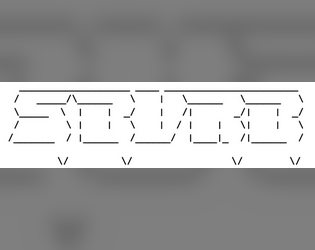I don't know of anyone who's actually played it. If you did, you might be the first! I'd love to hear how it goes. Maybe if some folks play it and like it, I'll get ideas for a version 2.
We Need To Talk
Creator of
Recent community posts
Ahh. The answer to both questions is "PBTA systems are more player-driven than most systems." The consequences to most moves build their own drama, ideally, so the GM's main job is to set the tone, present situations, roll with the consequences of players' moves, and fill out the world with new stuff.
You might want to talk with potential players about what they want out of a game--if they want detailed singler-player exploration of their Lands, great! You can plan out some interesting locales. Play-by-post might be better for keeping that manageable/engaging.
But if they want the Homestuck experience--haphazard exploration regularly interrupted by shenanigans, game-breaking exploits, and text- or voice-chat conversations--then that's going to be a much more free-wheeling game. In that scenario I'd recruit my players to come up with ideas about the session, or even try the round-robin GMing approach so that everyone get to contribute equally.
First off, I'm glad you like what you see! I hope it's as fun as it sounds.
Your questions are interesting. I'll take a crack at them.
1) I didn't provide much about SBURB as a game because the sessions we follow in-story are all described as outliers. That said, if I wanted to hew a little more closely to what we're led to believe is a "traditional" session of SBURB, I'd probably steal the idea of Progress Clocks from games like Blades in the Dark. For instance, I might progress a "Death of the White King" clock at certain story points, or when players fail to avert certain forms of trouble. Similarly, I might break the process of entering the session into a clock based on its key steps (i.e. Install Sburb, Deploy Devices, Alchemize Entry Item, and Prototype Sprite [once or twice]), then allow the actual entry to proceed at the pace that drama demands. The process of building up a tower and sufficient grist to help create a Universe Frog would also be a clock (or maybe one clock per player). That sort of thing.
All that said, if your players are familiar with Homestuck already, much of that stuff could be glossed over in favor of them chasing shenanigans in the course of broadly-stated goals.
2) The GM Principles should guide you in when to use your moves, but in general "Threaten trouble, individually or massively," "Impose an obstacle," "Hint at secrets," "Take something precious," and "Offer something the players want or need" are the moves you'll use to prompt players to act. "Follow through on a threat," "Reveal the truth," "Mark a connection for a player," and "Advance the clock" are moves you'll use to acknowledge/reward/respond to player actions. ("Mark a connection for a player" could use more clarity--it's intended to let the GM give out free connections to encourage cool stuff and power up players in ways that help the story). The remaining GM Moves are more focused on scene-setting and plot progression/expansion, and are good for when the current scene is more player-driven or has nothing in particular going on.
Of course, if you use Progress Clocks as suggested above, the timing for a lot of GM Moves would become more obvious. In fact, it'd be fair to add a GM Move of "Set a Progress Clock," or maybe something more SBURB-appropriate like "Reveal a Countdown."
Hope these help!
Hey, that's great to hear! I'd love to hear how it goes.
Regarding connections, the true answer to your question is "whatever works best for your game," but if you want the technical answer:
If you look through the Moves, you'll see that a lot of them tell you to mark a connection, so as long as players are interacting with the setting by doin' stuff, they'll probably be collecting a fair amount even aside from Wants. For an example, let's say I'm having trouble with ogres invading my personal space and I want to build up a hammer named Trǫllnir that's great at getting giants out of my face. If I roll a 7-9 or a 10+, I've got the option to mark a connection related to my hammer. I might mark down Connection: Trǫllnir, or I might mark down a connection to some joke I made when I succeeded at the roll (Me: "ha ha, can't touch this, am i right?" My friend: "Is this another 90s rap reference I don't understand?"), or just Connection: Gonna Fuck Up Some Ogres.
Then, later, when I want to spend that connection, I can just reference it, like an in-joke or dramatic pay-off. I basically fire Chekov's Meme Gun, though there's nothing in the rules stopping me from deploying the reference at an inappropriate time in order to make a statement about my character or just get some laughs from the table.
Or I can trade it in for experiences, since not every joke or strategic decision is necessarily going to merit a callback, and my character's busy growing and getting stronger. Or I can give it to another player to do with what they wish. (Like how Dave never actually did anything with that "bleating like a goat for ironic purposes" idea, but Dirk later did.)
Hope that helps!




